It seems we can’t find what you’re looking for. Perhaps searching can help.
Sign Up for newsletter!
Subscribe to get the latest eBook!
Hotline






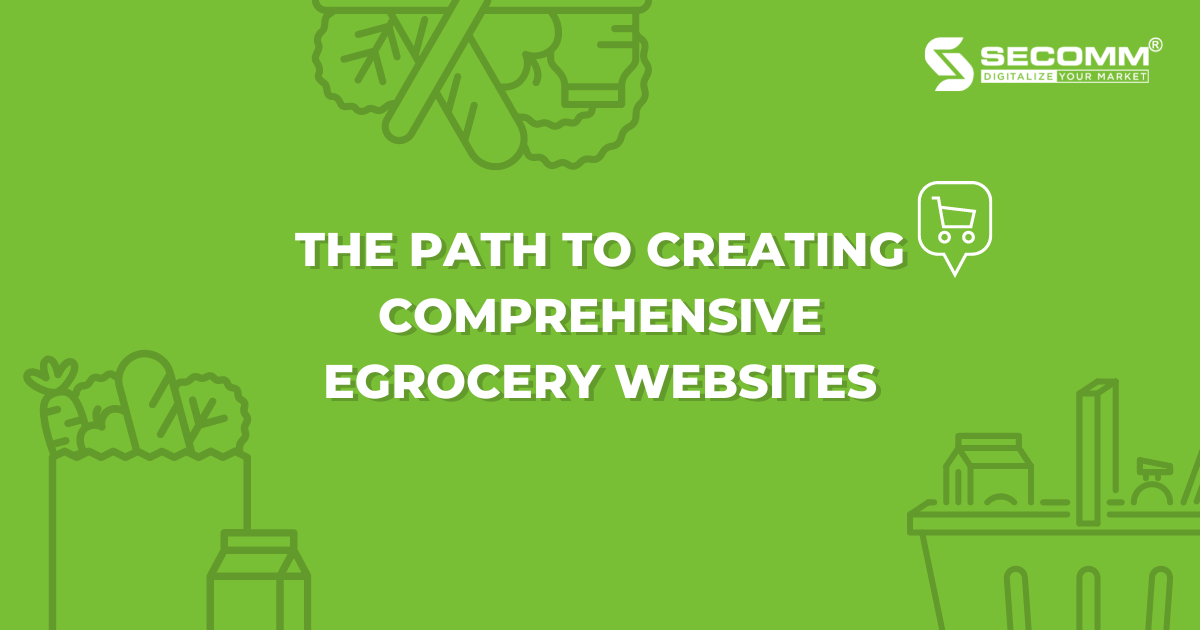
According to Statista, the size of the Vietnamese ecommerce market in 2021 was $13 billion and is expected to reach $39 billion in 2025, ranking second in Southeast Asia behind only Indonesia. The spectacular breakthrough of the grocery eCommerce industry has coincided with the explosion of the eCommerce market. As a result, online grocery shopping has become a part of 53 percent of consumers’ habits.
Grocery companies should create their eCommerce website as soon as possible to jump into the bigger game and develop online grocery business activities to capitalize on the enormous potential of the eGrocery market and gradually transition to digital transformation.
SECOMM has outlined the journey to create a comprehensive eGrocery website for the Vietnamese market with over 7 years of experience in eCommerce.
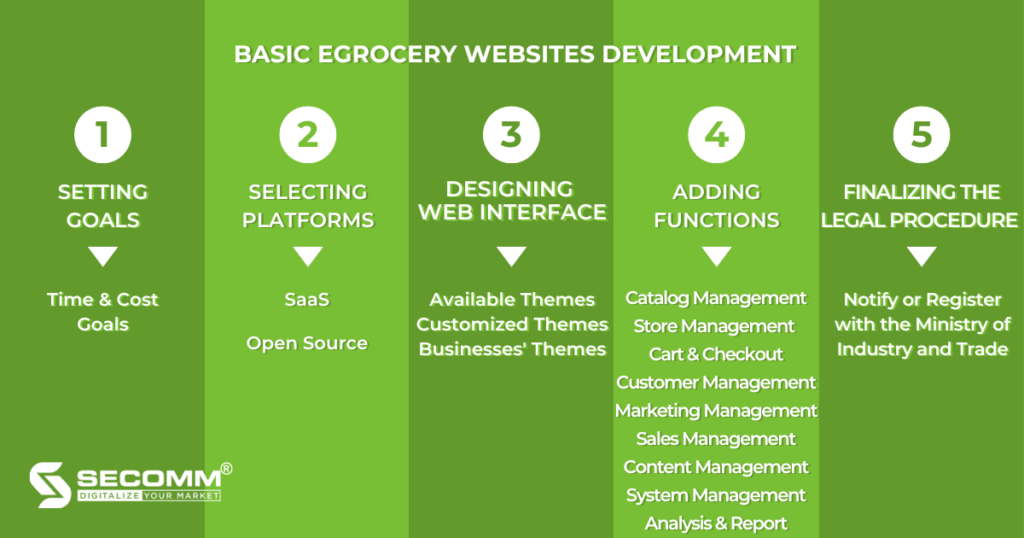
The first step for grocery businesses is to set goals and prioritize those goals to plan the result of an appropriate eCommerce website for each stage.
Businesses can consider long-term goals such as brand positioning, exploitation of potential customers, and product online business capability.
Short-term goal activities such as revenue growth, customer monitoring and analysis, campaign effectiveness evaluation, and so on should prioritize by businesses.
Furthermore, the user experience factor, which includes services such as payment, logistics, online customer care, and so on, is critical to increasing interaction, support, customer consultation, and problem resolution as quickly as possible.
In terms of duration, businesses can choose to deploy quickly to penetrate the eGrocery market or gradually adapt to the market at this stage. When deploying a grocery ecommerce website, the budget will be determined by each business’s strategy and financial potential.
Two popular platforms assist businesses in developing eCommerce websites: SaaS (Software as a service) and Open Source. Here are some of the best Saas eCommerce platforms: Haravan, Shopify, and BigCommerce.
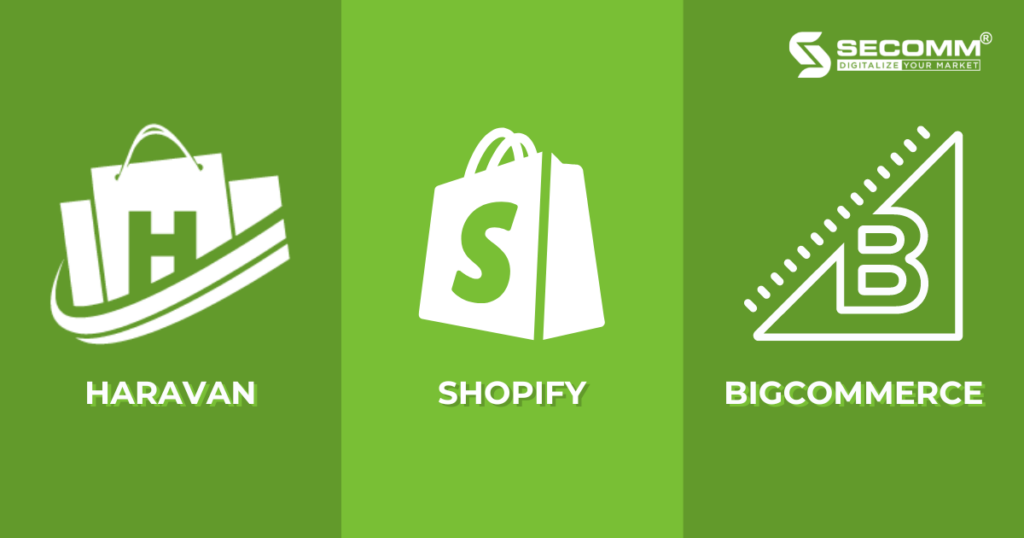
Open Source eCommerce Platforms widely used in the Vietnamese market include WooCommerce, OpenCart, and Magento.
Due to the significant differences between SaaS Platforms and Open Source Platforms, stage businesses prefer to use SaaS Platforms in the initial stages of basic eGrocery
Businesses have to meet the following criteria when designing the website interface: UI/UX standardization, displaying the brand’s and the eGrocery industry’s characteristics, and product presentation synchronization to provide the best experience to customers.
There are three approaches to designing the interface: using available themes, customizing themes, or creating their own. Businesses frequently use the available themes in this stage to save the most money. Still, some companies with financial potential will choose the other two options for better branding.
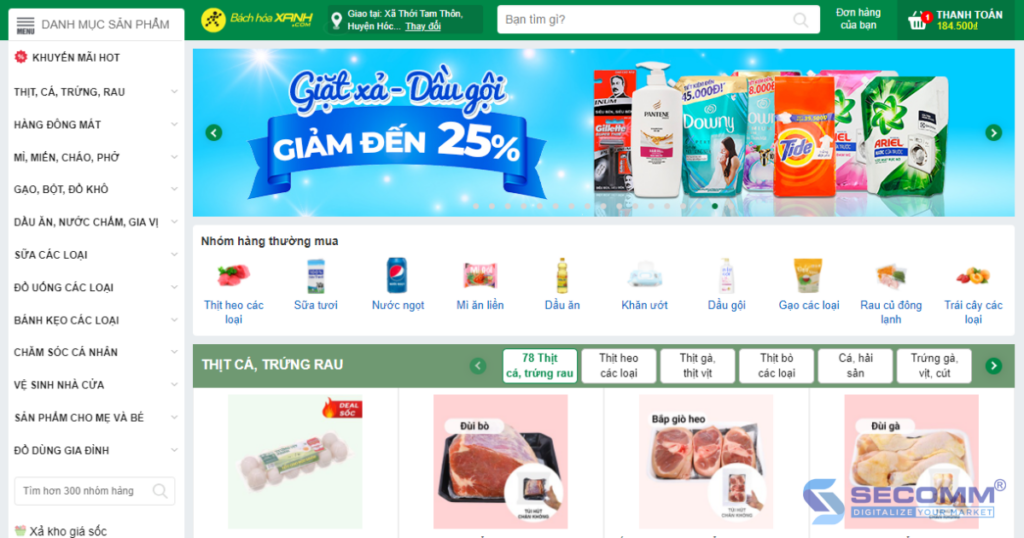
When operating a grocery eCommerce system, businesses can prioritize the development of basic functions to meet the essential needs during this time.
Some basic functions required in eGrocery websites, such as:
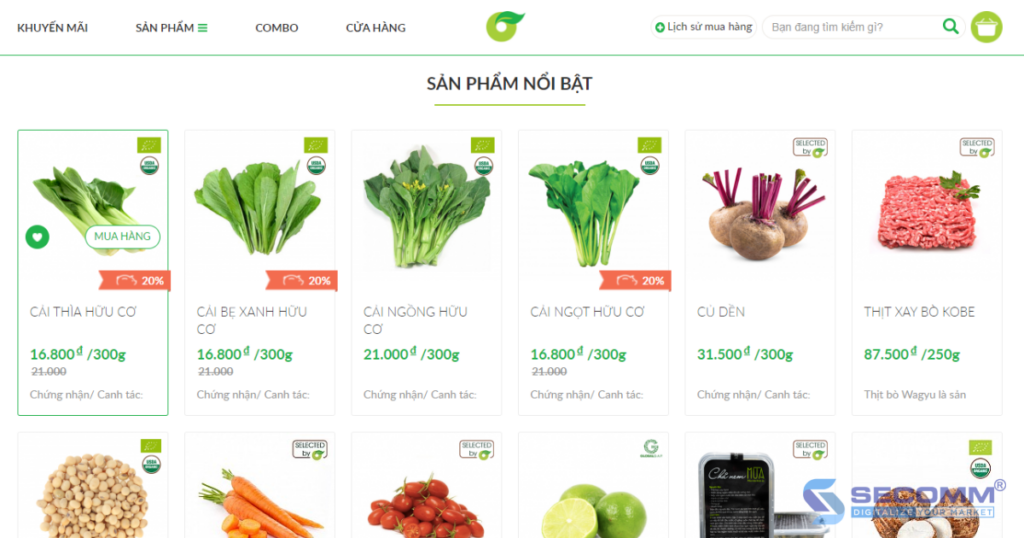
According to Decree 52/2013/ND-CP of the Government, every individual or organization that owns a sales eCommerce website must notify or register with the Ministry of Industry and Trade on the eCommerce Operation Management Portal.
Websites that exceed the time limit or fail to register/notify the competent management agency within the time frame specified will be administratively sanctioned by regulations.
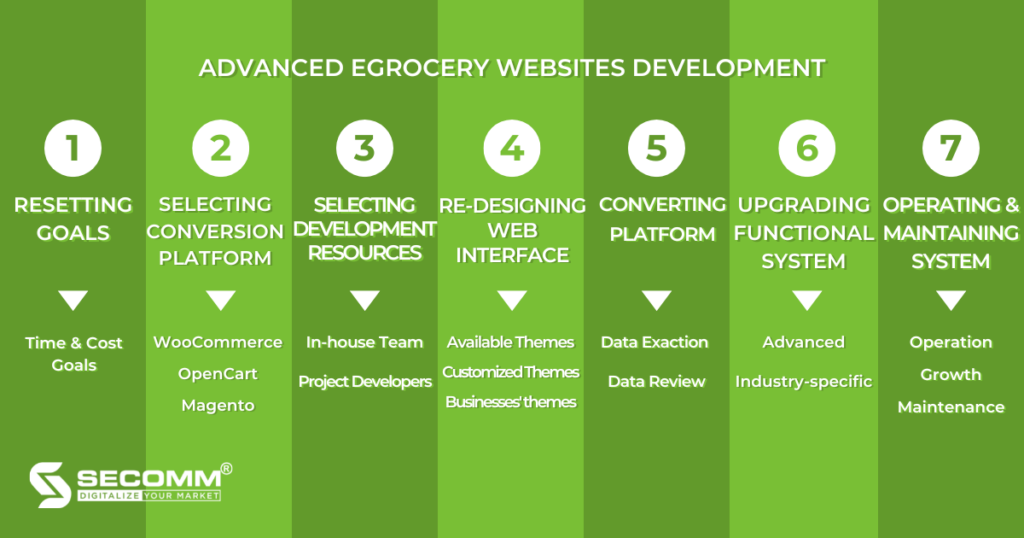
As the company grows and the market changes, the goals must be adjusted accordingly. This is also the time for leaders to rethink the business strategy’s target and money to invest in the grocery eCommerce website system. During this time, businesses frequently focus on the short and long-term goals of expanding the online grocery store system.
Long-term business goals can include expanding market segments, developing loyalty programs, forming consumer online shopping habits, etc.
Short-term goals for businesses can include capturing more new potential customers, increasing revenue, and supporting Ecommerce Marketing strategy.
When SaaS platforms are no longer effective enough to help businesses expand their online grocery store website systems, they have to turn to Open Source platforms like Magento, WooCommerce, and OpenCart to build advanced eGrocery websites.
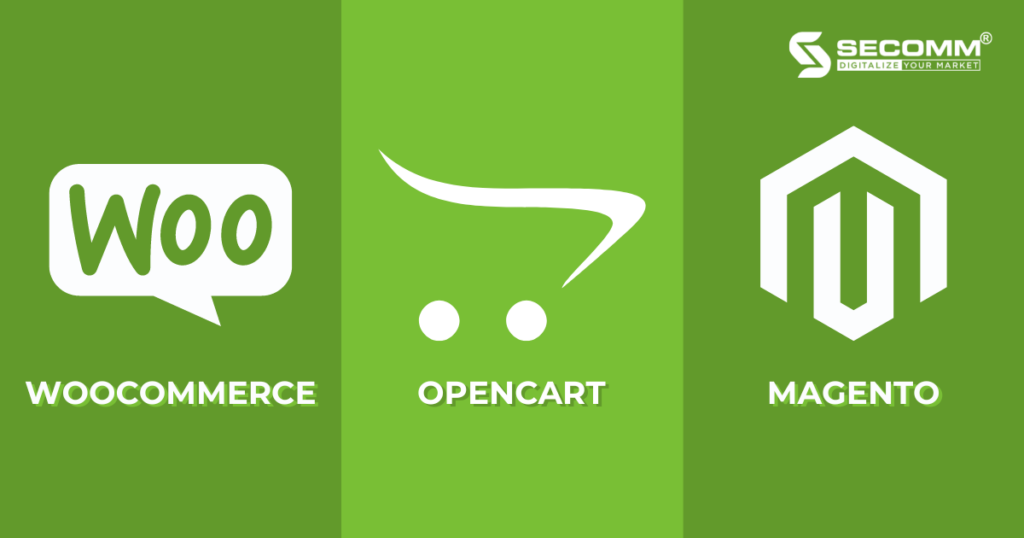
In this stage, platform selection criteria include:
Absolutely, businesses will face more challenges when switching platforms from SaaS to Open Source, such as changing costs, time to train personnel on open platforms, and data loss or errors during the conversion.
Businesses must choose the right resources to develop their website to build eCommerce website on an open source platform. Typically, companies can create an in-house team or find a project developer. Regardless of the resource, professional knowledge and practical experience about the chosen platform are required.
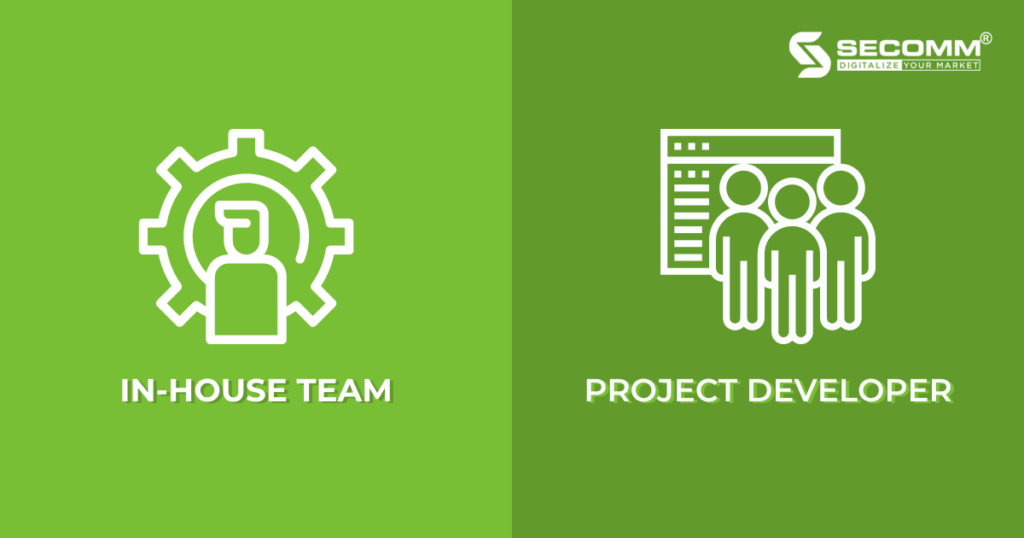
Businesses should recruit and train IT and eCommerce personnel with expertise and experience in the chosen platform. Building the right team will take a lot of time and money. Still, it will help businesses manage resources better and actively edit or develop the website system according to the requirements.
Businesses should look for project developers based on the following criteria to collaborate with them:
This will help businesses learn expertise, gain experience, and develop a website in all aspects of the eGrocery industry. Still, companies and their partners must collaborate effectively to achieve a better result.
Businesses can keep things the same while switching platforms. There is no need to change the current website interface. Many companies, however, will rebuild the website interface to match the new strategy and platform.
Similar to the previous stage, businesses have several options when designing the interface of a grocery eCommerce website: using available themes, customizing the themes, or creating their own. At this stage, however, businesses frequently choose to customize or design their own theme to reflect the characteristics of the eGrocery brand and industry.
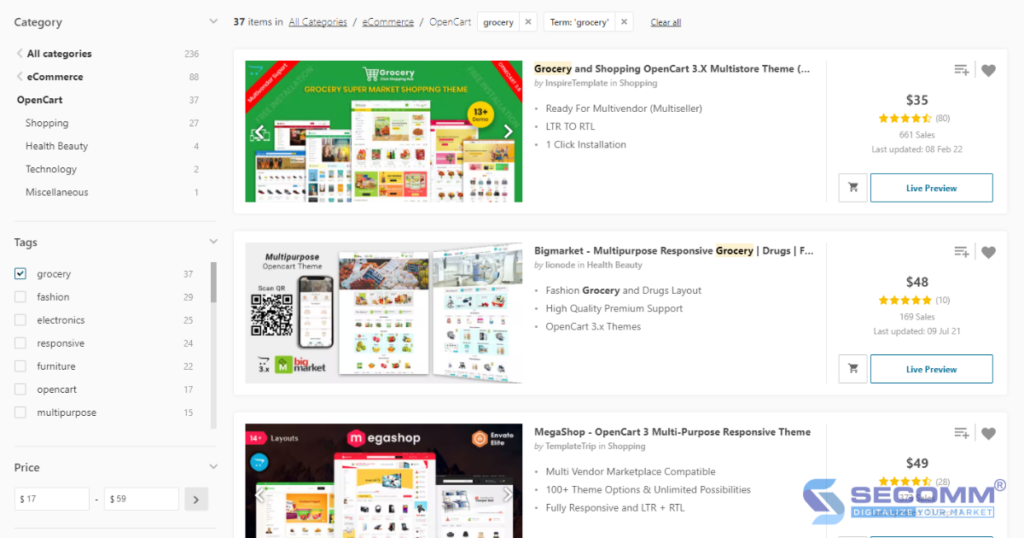
After selecting the appropriate conversion platform, the conversion should be carried out carefully to limit the risk of data loss or enterprise error. To avoid errors, the conversion is usually done as automatically as possible.
The platform conversion process includes steps to extract data from the old system and record it into the new system. After converting the platform, businesses need to double-check to ensure that the converted data is fully and correctly according to the plan.
In addition to the basic functions, businesses should focus on developing a more complex system of functions, including advanced and industry-specific functions for the eGrocery industry.
Advanced functions include order tracking, abandoned cart, similar product recommendations, advanced product search, multilayer product catalog, and others that improve the consumer experience and speed up the shopping process.
Industry-specific functions aid in thoroughly resolving the challenges of implementing intensive departmental eCommerce, meeting the needs of customer segments and businesses such as fast delivery, delivery time selection, and so on.
Furthermore, businesses must constantly update and develop user-friendly functions to stay competitive in the market.
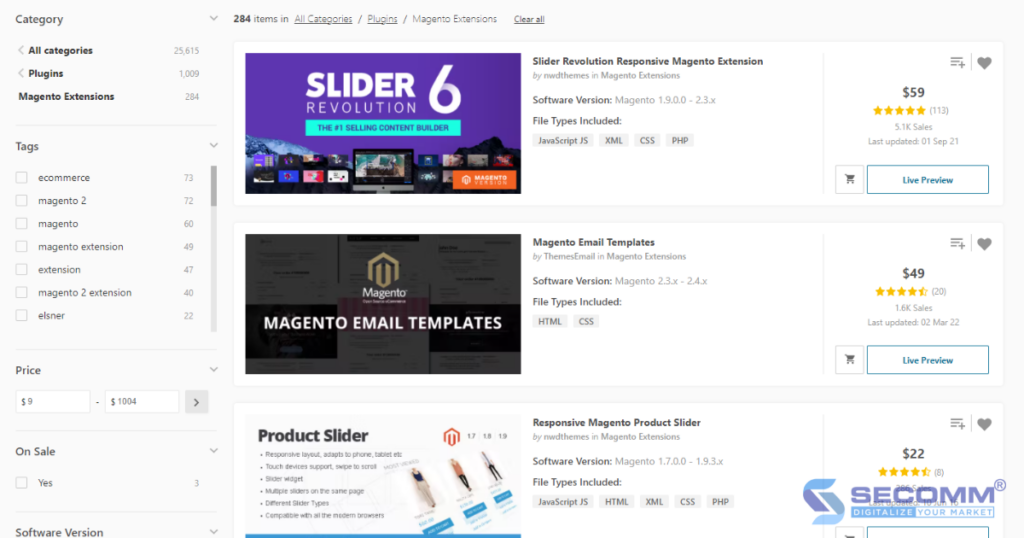
When putting the grocery eCommerce website system through testing, businesses must review and test the entire website and functionality in a specific time frame to ensure order processing speed, website stability, and so on. In addition, businesses must immediately contact the in-house team or the developer if issues arise to adjust and improve the website before going live.
After the grocery eCommerce website system has stabilized, businesses should focus on Ecommerce Marketing strategies (SEO, SEM, Email Marketing, Content Marketing, Social Marketing, and so on) or implement Omni-channel to grow their online eGrocery business.
For long-term sales growth, businesses should maintain, update, and upgrade their website system regularly, quickly adapting to changes in the eCommerce market in general and the grocery market in particular.
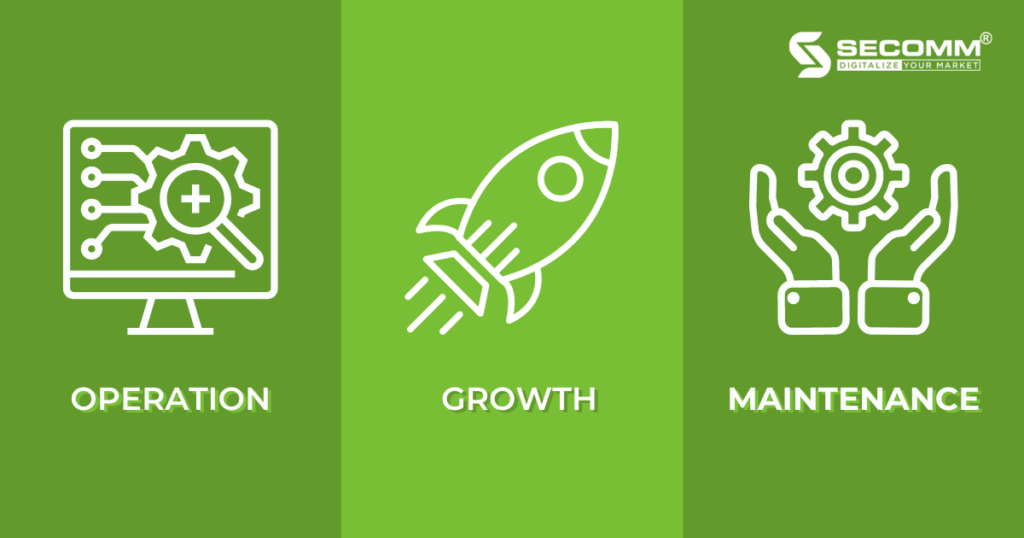
In general, developing comprehensive eGrocery websites for the Vietnamese market is complex. It requires businesses to invest significant time and money in researching the best eCommerce strategy for each stage of business development.
Our company – SECOMM, has been partnering with many big enterprises such as An Nam Group (Vietnam), Jasnor (Australia), and Changi Airport Group (Singapore). As a result, we are aware of the challenges and worries firms face while developing an eCommerce website system.
Get in touch with us now for FREE eCommerce consultancy and solutions in eGrocery businesses.
 2
2
 4,116
4,116
 1
1
 1
1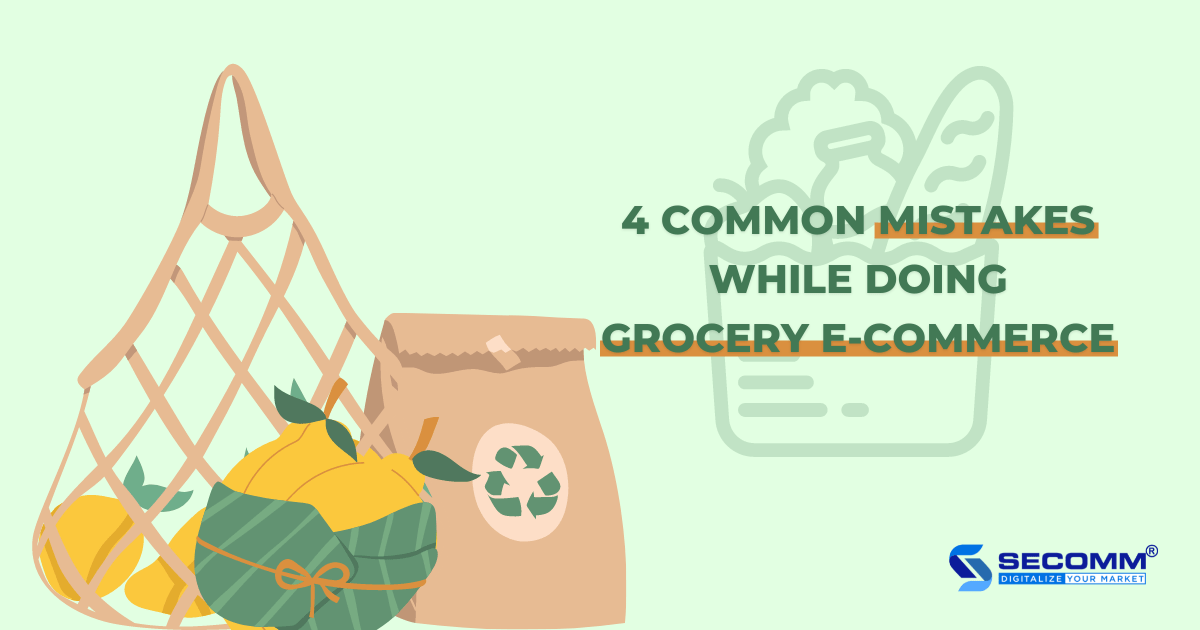
Grocery e-commerce is an inevitable business trend in the current Vietnamese e-commerce market. Some grocery stores have implemented e-commerce very early and have achieved great success, such as An Nam Gourmet, Bach Hoa Xanh, WinMart, and Co.op Online.
However, not all businesses are fortunate to deploy effective e-commerce because risks and wrong decisions when doing business can happen in any market, not only in the eGrocery market.
Some mistakes are fixable, but there are mistakes no matter how much budget and time it takes to make up. Here are some online grocery store mistakes that eGrocery business leaders need to know.
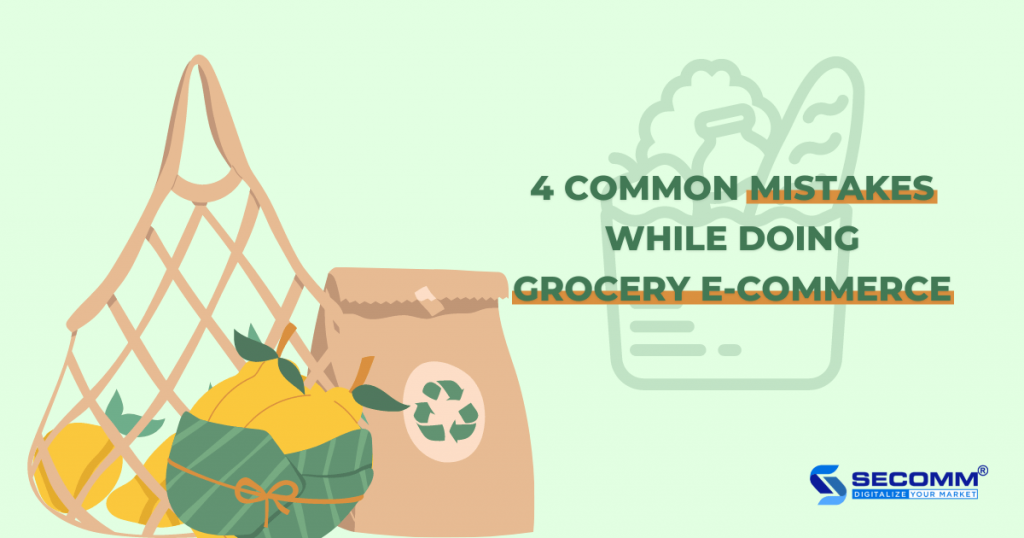
The grocery store business process in chain stores and e-commerce websites is entirely different. However, when implementing e-commerce, many businesses put the entire existing process on the website system without any customization or modification to conform to general operating procedures.
To shift business from offline to online, businesses must face difficulties such as synchronizing data from POS (Point of sale), e-commerce platforms, and e-commerce websites for other systems like CRM, ERP, BI, etc.
Grocery e-commerce is an extraordinary industry, with many complex features such as products with many units, selling methods, weight differences, constantly changing prices (day/week/month/year), expired products that need to be canceled, or imported new must have specific data, complicated payment processes, cumbersome warehousing operations, etc.
In particular, most products in the grocery store are fresh and fast food, so the damage rate is high, and the delivery time needs to be faster than in other fields. In addition, for these items, “housewives” also need to choose the correct delivery time.
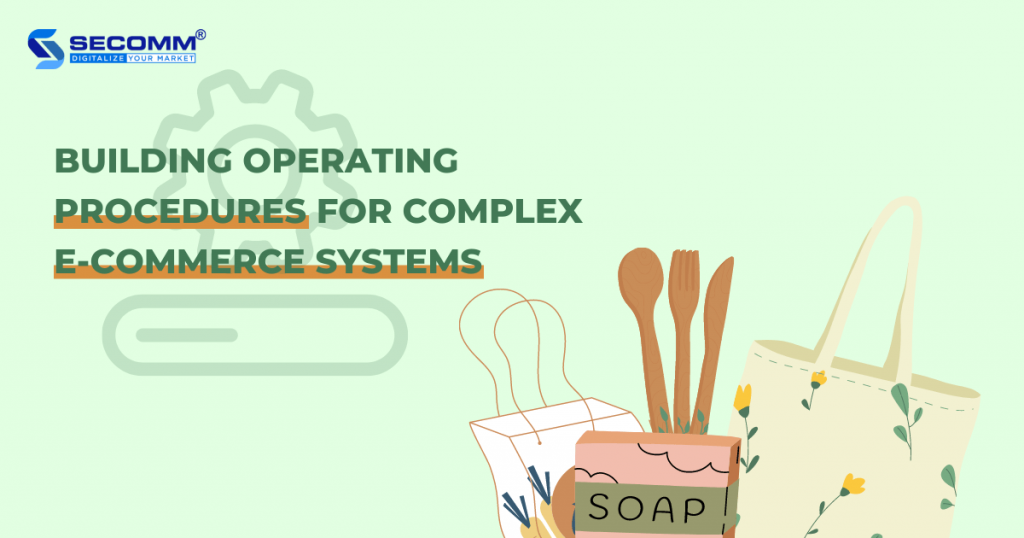
Because of the complexity of the operation process, the requirements for the e-commerce system are also more unique compared to other industries, making it difficult for managers to grasp the business situation and not be able to manage the number of products in stock in each branch.
Enterprises should build their in-house team or look for experienced grocery e-commerce developers to design the system operation process for specific industry and business problems that SaaS platforms cannot provide.
An e-commerce platform is software that businesses use to build an e-commerce website. Choosing a platform is always the first step in the e-commerce business process, so choosing the wrong one will lead to the entire online grocery store strategy going down.
After a period of using the unsuitable platform, businesses are required to “change blood” with another platform. This mistake wastes time and budget to build an e-commerce website for businesses without bringing about the expected results. It takes time to recruit and train employees to get used to the new platform.
To avoid this unnecessary mistake, businesses need to clearly define short-term and long-term goals for the brand, thereby building the criteria for choosing the most suitable e-commerce platform. To do that, businesses can do their research or seek professional advice before making a final decision. Of course, this takes time, but it will save time in the long run for the business.
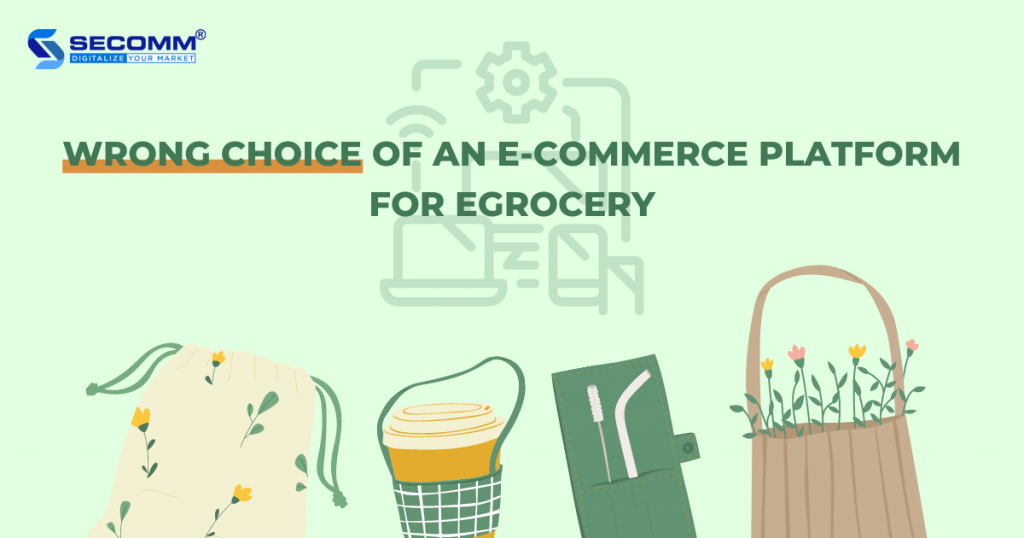
Currently, businesses that want to implement e-commerce step by step often choose Saas (Software as a service) platforms such as Shopify, BigCommerce, and Haravan in the early stages. This helps businesses save budget and time in the short term, market exploration, etc. Then, switch to open source platforms (Open Source) such as WooCommerce, OpenCart, and Magento to upgrade and expand the website system with convenient features for users and businesses.
Businesses with a long-term e-commerce business orientation often choose open source platforms right from the start to long-term companionship with businesses. Starting and developing continuously on an open source platform helps businesses save money and time to switch platforms, and own and fully control the system from source code to customer data, efficiently and proactively develop new features suitable for users and markets.
However, similar to building an operating process, choosing an e-commerce platform does not have a typical “recipe” for all businesses. Hence, each business needs to understand its business strategy, operating model carefully, and so on. in each stage of development.
The interface is essential in the grocery business, and it is necessary to meet UI (User Interface) and UX (User Experience – User Experience) standards. These are two crucial factors in any e-commerce website. However, many businesses forget these two factors when designing websites, leading to consequences such as an unattractive interface, not showing the characteristics of the business and the grocery, poor website performance, and page loading—slow, poor navigation, and few specialized functions for e-commerce, etc.
The UI / UX standard design has not been emphasized. However, the user experience on the enterprise’s website becomes worse, unable to retain users, affecting the revenue and brand positioning of the business.
So when choosing an e-commerce platform, businesses should also choose platforms that can help businesses customize the interface and functionality of the source code.
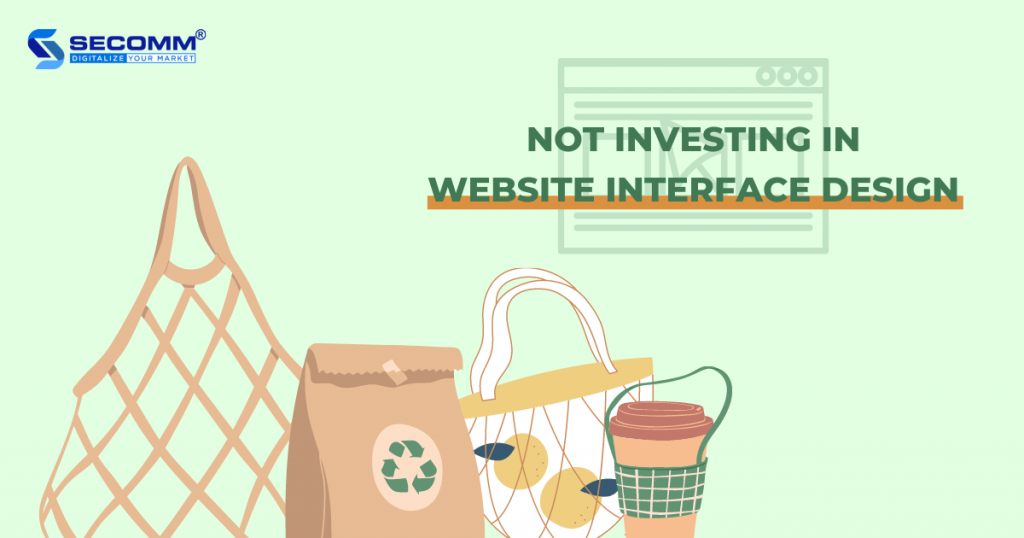
Currently, there are 3 ways to design the interface for a website:
At the right time, the functional system is not what “needs not to have” and “what has is not needed.” For example, in the early stages of entering the e-commerce market, businesses often do not have a certain number of users, so the functions of the Loyalty Program (loyalty program) are not necessary. Instead, businesses should focus on building functions that help exploit potential customers. Then, after having a stable number of users, businesses can gradually build more specialized functions, solving industry-specific problems.
Building a functional system that is not suitable for users’ needs at each time will waste time and cost to build a website without providing a satisfactory shopping experience, affecting revenue efficiency and can be left behind competitors in the industry.
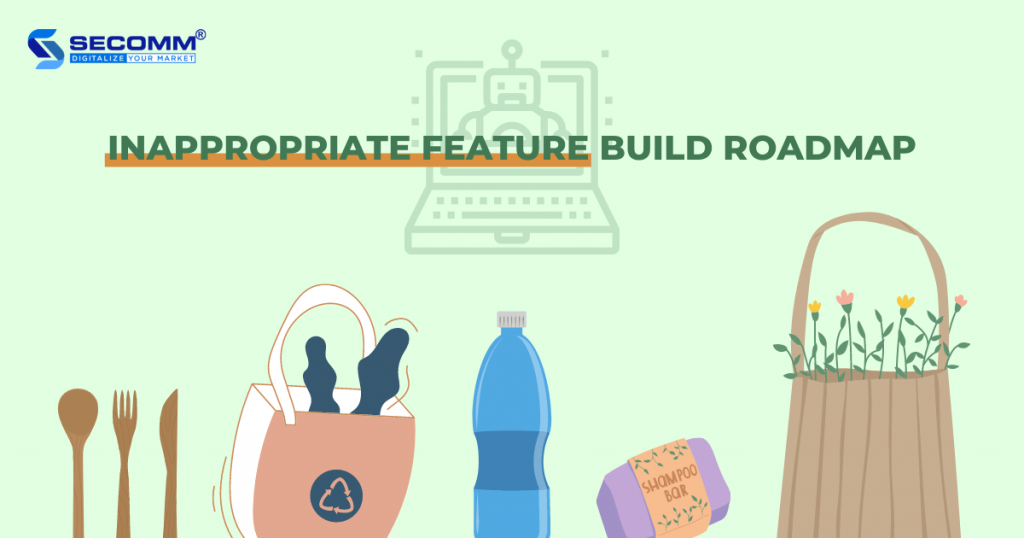
In general, egrocery is the “golden opportunity” for businesses to implement e-commerce. However, to capture opportunities and market share, businesses need to pay attention to many factors, especially the mistakes to avoid mentioned in this article.
With experience in successfully implementing complex grocery e-commerce systems like An Nam Gourmet, SECOMM understands grocery businesses’ obstacles. Contact SECOMM now for a free consultation on detailed e-commerce system development solutions!
 2
2
 3,417
3,417
 1
1
 1
1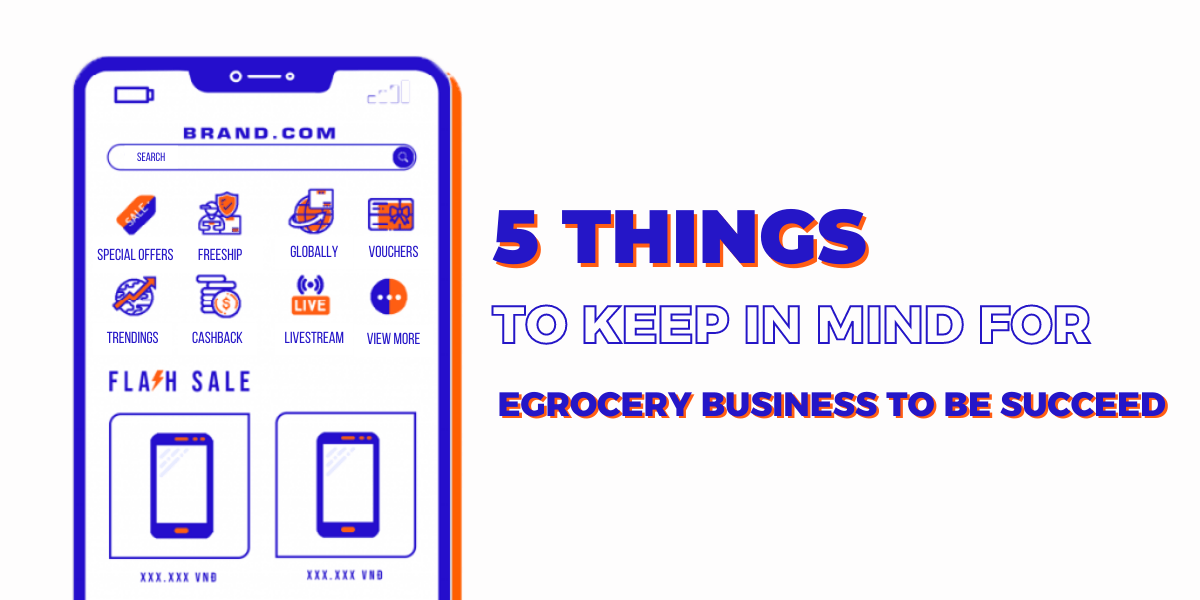
When grocery business activities face many obstacles such as strict lockdown measures by Covid-19, shortage of necessities, and geographical distance, the demand for egrocery increases daily.
Ecommerce marketplaces such as Tiki (Tiki Ngon), Lazada (Lazada Supermarket), Shopee (Shopee Fresh), and super apps like Momo (Online shopping), Grab (Grab Mart), etc. all, in turn, deploy egrocery to respond to consumer needs promptly. In particular, grocery stores’ eCommerce websites such as Bach Hoa Xanh, WinMart, and Co.opmart quickly seized the opportunity and grew impressively!
The egrocery market continued to thrive after the lockdown period was removed, indicating the expanding potential of the grocery eCommerce business.
Not only was grocery eCommerce appearing in the Vietnamese market but also globalization. For example, in the United States market, egrocery has an annual growth rate of 200% (according to Statista).
Businesses must swiftly develop an eCommerce system fit for industry and customers to capture changes in the market. However, administrators must consider several concerns while implementing grocery eCommerce to efficiently engage in the market.
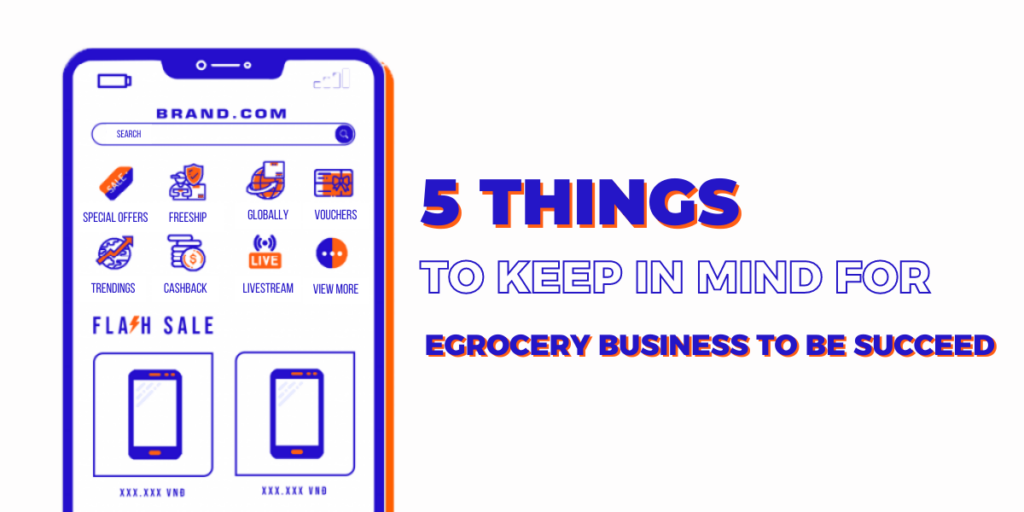
Choosing the right eCommerce platform is essential for any business, not just the grocery industry. An eCommerce platform compatible with business strategies will help companies save time, accelerate the digital transformation process, and save money on deploying eCommerce websites in both the short and long term. In addition, businesses do not need to switch platforms many times, saving time and budget for recruiting and training personnel to familiarize themselves with the system.
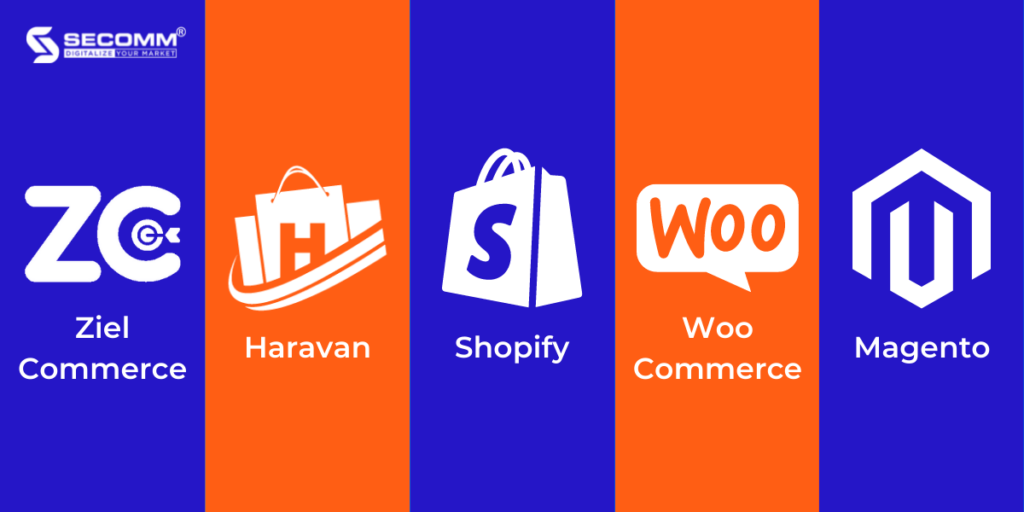
Some grocery business eCommerce platforms include Ziel Commerce, Haravan, Shopify, WooCommerce, and Magento. In particular, Ziel Commerce is a platform designed explicitly for eGrocery businesses.
SaaS platforms like Haravan and Shopify are suitable for SMEs (small and medium enterprises), startups, or new entrants to eCommerce. WooCommerce is ideal for businesses that need to own the source code and customize the website at an affordable cost. The Magento platform is suitable for many different business models (B2C, B2B, B2B2C, etc) and many different business sizes (SME, startup, large corporation, etc).
This platform meets the needs of building an industry-specific eCommerce website under its characteristics, with full ownership of the source code and the ability to customize the website. However, due to the prolonged deployment time and high prices, many businesses are hesitant to use Magento, while many enterprises trust it.
A big problem that egrocery businesses need to pay attention to is that the grocery industry has a relatively complicated operation.
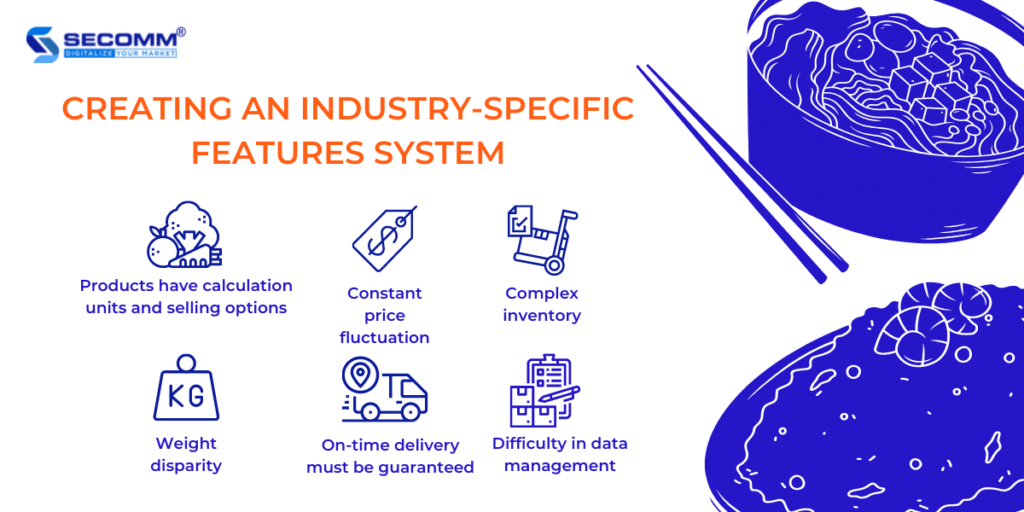
Grocery products have many units of measure, weight differences, and different ways of selling; prices constantly fluctuate and update continuously by day/week/month/year.
The import and export of warehouses are complicated (general warehouse, store warehouse, warehouse for each area in the store), so when deploying an online grocery store, businesses need to synchronize the price and quantity of products so that when restocking, the data will not be lost. Weight and cost data on branches are changed under control, avoiding the lack of synchronization between frontend and backend, causing data processing to be interrupted.
At the same time, grocery products are mainly fresh foods such as meat, fish, eggs, milk, etc, so they need to be refrigerated, delivered quickly, or selected with the correct delivery time.
Handling all the problems in the complex operating process of the grocery industry requires a team of highly qualified IT and eCommerce personnel to design an eCommerce system that is suitable for the specific process and requirements of the business – something current SaaS platforms are not enough to meet.
When running an online grocery store, the user experience requirements are very high; from navigating shopping behavior to the checkout process, order delivery needs to be optimized. Because user experience increases the likelihood of customers placing their first order, it also gives customers more reasons to buy again, contributing to a competitive advantage over competitors in the same industry.
There are many ways for businesses to enhance the user experience, such as layering product categories to navigate customers more intuitively and building specialized functions such as quick add products to cart, fast checkout, search enhancements, and product recommendations based on collected data, etc.
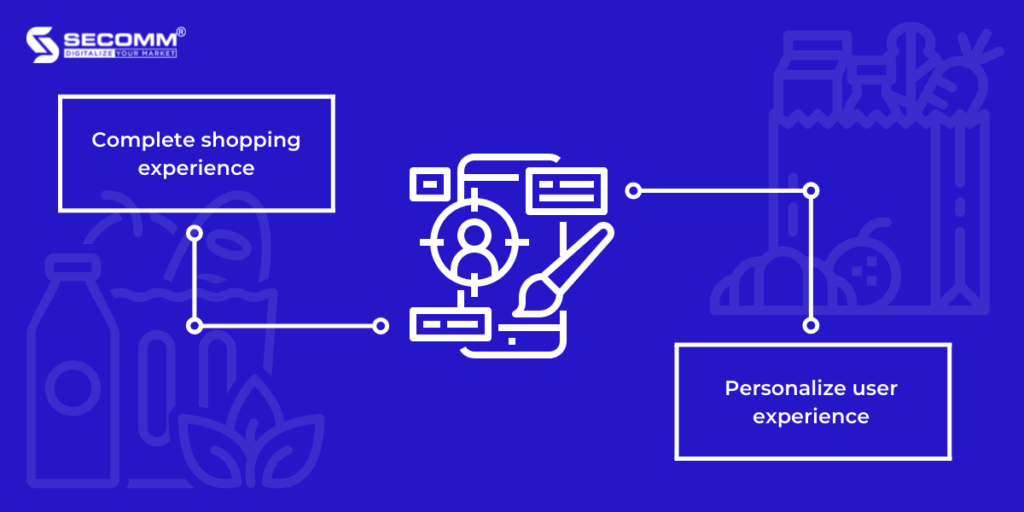
At the same time, personalizing the user experience is an essential factor in the customer’s shopping journey. Businesses exploit, analyze, and leverage data to build the right customer journey, match consumer behavior, and increase the user experience level of personalization.
Personalize from CMS content and display products to navigate the shopping journey for businesses to increase loyalty and customer lifetime value (CLV).
The secret of doing an online grocery business is building incentive programs suitable for customer segments.
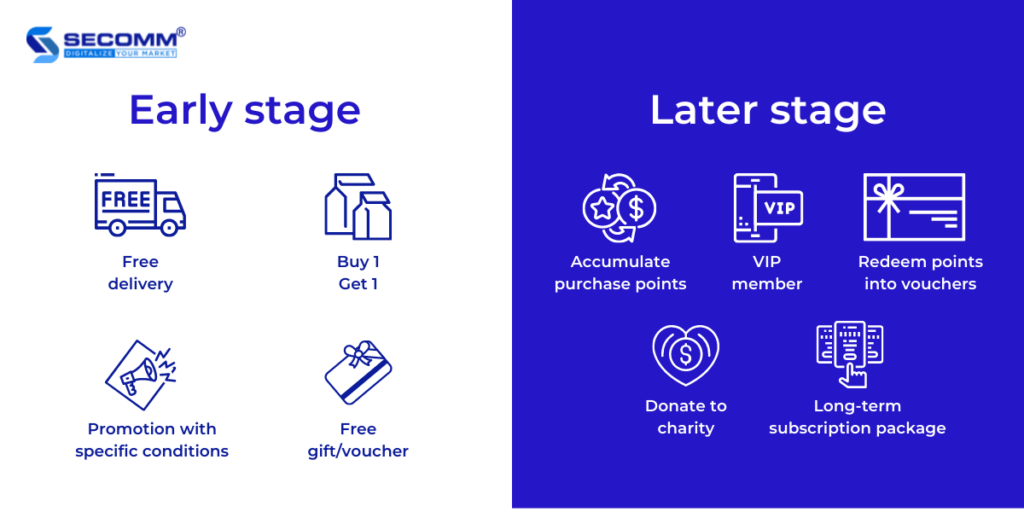
Some popular promotions that businesses can apply in the early stages include free shipping, buy one get one free, gifts/vouchers, or promotions with specific conditions (certain items reach a particular value).
After that, businesses can deploy loyalty programs such as accumulating points for purchases, VIP membership, converting reward points into discount codes, donating bonus points to charities associated with the brand, subscription plans, etc.
Omni-channel is one of the inevitable eCommerce trends in 2022; the application of Omni-channel will help businesses do online grocery business more conveniently.
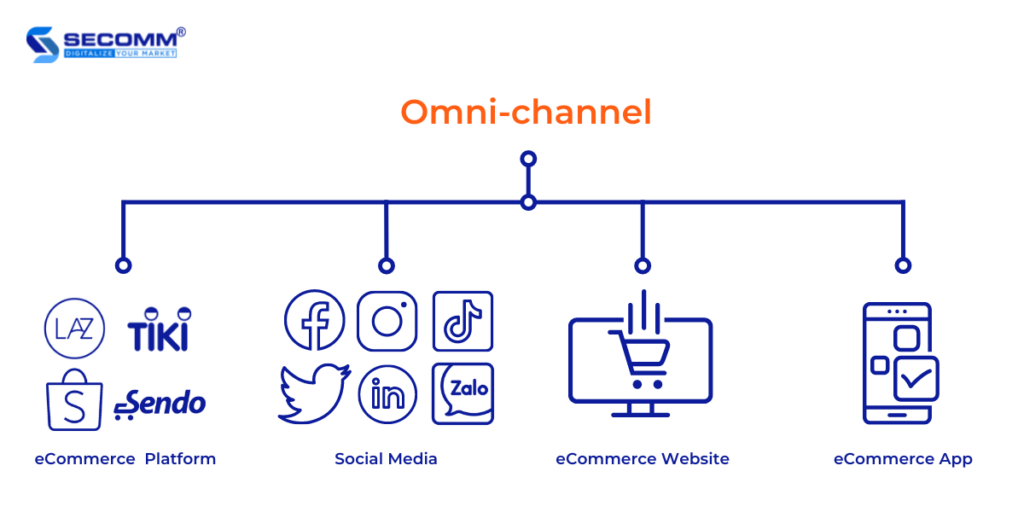
Omni-channel will help customers’ shopping experience be seamless from the physical store to the website, helping businesses follow customers from eCommerce platforms, social networks, websites, etc.
In addition, by collecting and analyzing information from Omni-channel, businesses can efficiently study customer behavior, preferences, and psychology and know whether they are satisfied with the product, service quality, or not to take reasonable measures to change.
It can be said that the grocery eCommerce business has both opportunities and challenges, requiring business managers to think carefully about tactics to make the most effective steps. But, of course, that work is not easy, finding a companion is also tricky, building an in-house team is not easy, and businesses have to pay a lot of opportunity costs and time to reach the “finish line” themselves.
With experience in successfully implementing complex grocery eCommerce systems like An Nam Gourmet, SECOMM understands grocery businesses’ obstacles. Contact SECOMM now for a free consultation on detailed eCommerce system development solutions!
 2
2
 4,264
4,264
 0
0
 1
1Subscribe to get the latest eBook!
Hotline